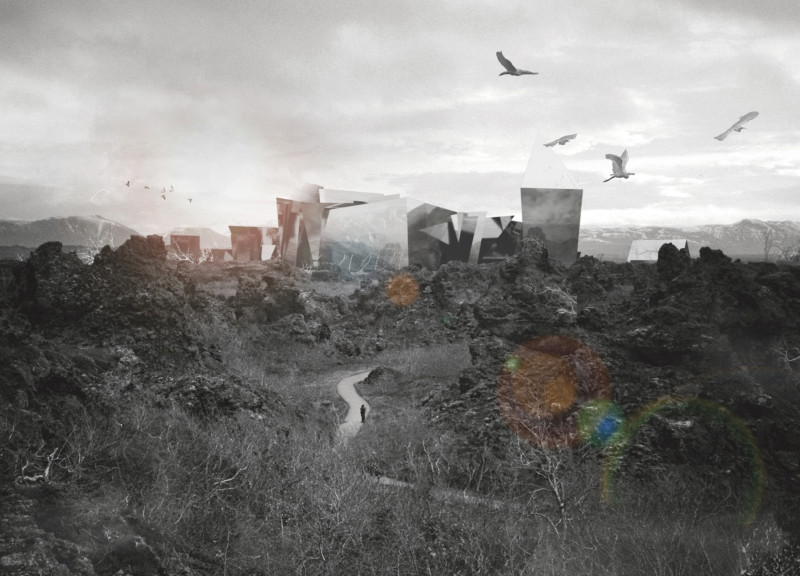5 key facts about this project
The building's concept revolves around the idea of “volcanic movement,” showcasing the processes involved in magma formation and the physical manifestation of lava in its solidified state. The architecture employs crystalline forms that evoke the appearance and texture of natural rocks, creating an aesthetic that directly relates to the site’s geology. This approach not only enhances the visual appeal of the building but also establishes a dialogue between the architecture and its environment.
Unique Structural Elements
One of the distinguishing features of the Iceland Volcano Museum is its use of polished metal and high refractive index glass. These materials optimize natural light, allowing dynamic interactions between the interior and exterior spaces while reflecting the changing conditions of the landscape. The building's exterior, designed with a polished finish, creates a mirror-like effect, promoting a sense of unity with the surrounding volcanic terrain.
The museum’s layout is characterized by a series of interconnected crystalline shapes, which form a complex spatial arrangement that encourages visitor exploration. Key areas include exhibition halls designed for dynamic displays of geological artifacts and interactive educational workshops focused on volcanic processes. Additionally, the building integrates public spaces such as patios and viewing platforms, allowing users to engage with the natural environment and the geological narratives presented throughout the museum.
Environmental Integration
Attention to sustainability and environmental impact is central to the project's architectural strategies. The design methodology emphasizes energy efficiency and minimal ecological disruption. The use of reinforced concrete ensures structural stability while maintaining a low environmental footprint. Careful consideration of the site’s topography allows the project to blend naturally into the landscape, minimizing visual intrusion.
The Iceland Volcano Museum represents a noteworthy example of how architecture can embody scientific inquiry and cultural education. By effectively communicating the themes of geological change and community engagement, this project enhances the visitor experience while addressing relevant environmental considerations.
To gain further insights into the architectural plans, sections, designs, and ideas that shape the Iceland Volcano Museum, readers are encouraged to explore the full presentation of the project.


























